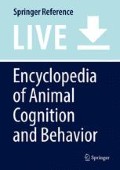References
Aplin, L. M., Farine, D. R., Morand-Ferron, J., et al. (2013). Individual personalities predict social behaviour in wild networks of great tits (Parus major). Ecology Letters, 16, 1365–1372.
Bauder, J. A. S., Morawetz, L., Warren, A. D., & Krenn, H. W. (2015). Functional constraints on the evolution of long butterfly proboscides: Lessons from Neotropical skippers (Lepidoptera: Hesperiidae). Journal of Evolutionary Biology, 28, 678–687.
Benazzo, A., Trucchi, E., Cahill, J. A., et al. (2017). Survival and divergence in a small group: The extraordinary genomic history of the endangered Apennine brown bear stragglers. Proceedings of the National Academy of Sciences of the United States of America, 114, E9589–E9597.
Both, C., & Visser, M. E. (2001). Adjustment to climate change is constrained by arrival date in a long-distance migrant bird. Nature, 411, 296–298.
Botsch, Y., Tablado, Z., & Jenni, L. (2017). Experimental evidence of human recreational disturbance effects on bird-territory establishment. Proceedings of the Royal Society B-Biological Sciences, 284, 8.
Candolin, U. (1998). Reproduction under predation risk and the trade-off between current and future reproduction in the threespine stickleback. Proceedings of the Royal Society B-Biological Sciences, 265, 1171–1175.
Candolin, U. (2000). Changes in expression and honesty of sexual signalling over the reproductive lifetime of sticklebacks. Proceedings of the Royal Society B-Biological Sciences, 267, 2425–2430.
Candolin, U., & Wong, B. B. M. (2012). Behavioural responses to a changing world. Mechanisms and consequences. Oxford: Oxford University Press.
DiRienzo, N., & Montiglio, P. O. (2016). The contribution of developmental experience vs. condition to life history, trait variation and individual differences. Journal of Animal Ecology, 85, 915–926.
Duckworth, R. A., Belloni, V., & Anderson, S. R. (2015). Cycles of species replacement emerge from locally induced maternal effects on offspring behavior in a passerine bird. Science, 347, 875–877.
Emlen, D. J. (1994). Environmental control of horn length dimorphism in the beetle Onthophagus acuminatus (Coleoptera, Scarabaeidae). Proceedings of the Royal Society of London Series B-Biological Sciences, 256, 131–136.
Frid, A., & Dill, L. (2002). Human-caused disturbance stimuli as a form of predation risk. Conservation Ecology, 6, 16.
Gross, M. R. (1985). Disruptive selection for alternative life histories in salmon. Nature, 313, 47–48.
Gross, M. R. (1996). Alternative reproductive strategies and tactics: Diversity within sexes. Trends in Ecology & Evolution, 11, 92–98.
Gruber, J., Brown, G., Whiting, M. J., & Shine, R. (2017). Is the behavioural divergence between range-core and range-edge populations of cane toads (Rhinella marina) due to evolutionary change or developmental plasticity? Royal Society Open Science, 4, 9.
Guillette, L. M., Scott, A. C. Y., & Healy, S. D. (2016). Social learning in nest-building birds: A role for familiarity. Proceedings of the Royal Society B-Biological Sciences, 283, 6.
Jirotkul, M. (1999). Operational sex ratio influences female preference and male-male competition in guppies. Animal Behaviour, 58, 287–294.
Jukema, J., & Piersma, T. (2006). Permanent female mimics in a lekking shorebird. Biology Letters, 2, 161–164.
Levis, N. A., Serrato-Capuchina, A., & Pfennig, D. W. (2017). Genetic accommodation in the wild: Evolution of gene expression plasticity during character displacement. Journal of Evolutionary Biology, 30, 1712–1723.
Napper, C. J., & Hatchwell, B. J. (2016). Social dynamics in nonbreeding flocks of a cooperatively breeding bird: Causes and consequences of kin associations. Animal Behaviour, 122, 23–35.
Oliveira, R. F., Canario, A. V. M., Grober, M. S., & Santos, R. S. (2001). Endocrine correlates of male polymorphism and alternative reproductive tactics in the Azorean rock-pool blenny, Parablennius sanguinolentus parvicornis. General and Comparative Endocrinology, 121, 278–288.
Reed, J. M. (1999). The role of behavior in recent avian extinctions and endangerments. Conservation Biology, 13, 232–241.
Robertson, B. A., Rehage, J. S., & Sih, A. (2013). Ecological novelty and the emergence of evolutionary traps. Trends in Ecology & Evolution, 28, 552–560.
Sachser, N., Kaiser, S., & Hennessy, M. B. (2013). Behavioural profiles are shaped by social experience: When, how and why. Philosophical Transactions of the Royal Society B-Biological Sciences, 368, 11.
Sherley, R. B., Ludynia, K., Dyer, B. M., et al. (2017). Metapopulation tracking juvenile penguins reveals an ecosystem-wide ecological trap. Current Biology, 27, 563–568.
Sih, A. (2013). Understanding variation in behavioural responses to human-induced rapid environmental change: A conceptual overview. Animal Behaviour, 85, 1077–1088.
Tuomainen, U., & Candolin, U. (2011). Behavioural responses to human-induced environmental change. Biological Reviews, 86, 640–657.
van Beest, F. M., McLoughlin, P. D., Mysterud, A., & Brook, R. K. (2016). Functional responses in habitat selection are density dependent in a large herbivore. Ecography, 39, 515–523.
Welch, M. J., & Munday, P. L. (2017). Heritability of behavioural tolerance to high CO2 in a coral reef fish is masked by nonadaptive phenotypic plasticity. Evolutionary Applications, 10, 682–693.
Wong, B. B. M., & Candolin, U. (2015). Behavioral responses to changing environments. Behavioral Ecology, 26, 665–673.
Author information
Authors and Affiliations
Corresponding author
Editor information
Editors and Affiliations
Section Editor information
Rights and permissions
Copyright information
© 2018 Springer International Publishing AG, part of Springer Nature
About this entry
Cite this entry
Candolin, U. (2018). Adaptedness of Behavior. In: Vonk, J., Shackelford, T. (eds) Encyclopedia of Animal Cognition and Behavior. Springer, Cham. https://doi.org/10.1007/978-3-319-47829-6_366-1
Download citation
DOI: https://doi.org/10.1007/978-3-319-47829-6_366-1
Received:
Accepted:
Published:
Publisher Name: Springer, Cham
Print ISBN: 978-3-319-47829-6
Online ISBN: 978-3-319-47829-6
eBook Packages: Springer Reference Behavioral Science and PsychologyReference Module Humanities and Social SciencesReference Module Business, Economics and Social Sciences

